Hongshan jadeite sculptures, manga style;
I was able to acquire a little jadeite sculpture, which made me think of the Japanese cult cartoons in manga-styles.
How much did I know, they were made 3 or 4th millennium BC.
In an era in which there were no iron tools. How did they make them, it must have cost an enormous amount of time, sanding and grinding with bamboo spindles -not unlike the wired fire-drills- and crystal sand.
They all have drilled holes like the Japanese Netsukes.
In burial places they were found lying next to the deceased, I guess for important high ranked persons. Archaic though modern. Timeless beings, mythological creatures, the morphology strikes me as interpretable for many creatures in one carving, sometimes the manga is a horned beetle on the back side and if you flip it you encounter a bulls-head, with the holes as eyes.
In other pieces you see a snakes head, cobra, python and bull next to the ancestral Mangastyle crouched ancestor. One large peace is a ceremonial axe, which in fact is a kind of shaman in a large sleeved gown with a funny bracket to separate the eyebrows, I think proto-Confucian. Anyhow, crouched figures signify ancestors according to Himmelheber.

The Pi rings have a function as an astronomical instrument but they could have just as well been worn as a bracelet. The comb-like structures come in many sizes. The pieces all have a crystalline structure, and a hardness of in between 5,8 to 7 (almost as hard as diamond 8). Many of these sculptures have probably been made in revival periods like the Qing dynasty. Though they were hard to make , production was proliferous.
The pieces are being found in between Inner Mongolia and Hongshanhou. Some state that a pig-face like style turned in its evolution into the curled dragon-style. So we find that the road to the dragon could stem from the line ,deer, pig, bird and snake.

Developing from a basic soft curled line into a more sharp angled curled style.
In the axe form one finds the horns of the deer and the form of the dragon. If one turns the bold end dorsal one could imagine a seed picking bird. In the cobra-head piece a reference to the snake is implicitly being made on its back side, could it have been a seal for a subject of a ruler? Was it a kind of tattoo and was it common then?
The white jadeite sculpture is a seated scribe or writer? On the bottom is a sign in an ancient script. Though I hold it for a much later Hongshan piece than the manga-styled ones. A seated figure in pig-face style with a robe and deer horns. White is a rare colour for a Hongshan sculpture too!
Seal
The cobra piece could be from a Niuheliang ceremonial burial site. See the moonshaped form right on the top rightside; is it cobrastyle derived?
Cobra?
Snake tattoo, a seal for subjects of rulers?
Manga cartoon-like faces. On the light green sample on its back we find mouton-jade, which means the colour of the fat under the skin of certain goats, highly appreciated by the nobility!
The shaman looks like an ox on its back and a sharp ceremonial small side on its lower side (feet) not unlike the Tibetan lama-knife (kartika vajra) to cut through illusions! And to uncut the ties with material existence.
The Kartika Vajra
Duckface
Catface
Combs or Bats
Butterfly and Bird
Mangarow
Dragon
or Dog
Beetle
Horned or Deer-beetle
Dorsal Manga
Moutonfatjade
Pythons head
Ox heads
or Dragonshead
Himmelheber's crouched pose
Pythonshead
Axe with dragontype and deerhorns
A seed picking cocked bird?
Did it have a similar function as the Kartika Vajra from Tibet?
The later style, white jade seal
Frog?
Comb masked type like my shaman axe
Hongshan Typology
Main Hongshan sites
Larger Shaman knife or kartika vajra like form
Every Treasure Tells a Story The Hongshan Jade Dragon- mother of dragons;
Hongshan lobster and cicade wit pigs dragonface addition collection M.
Dragon with pigs mouth
cicade pup or lobster?
Intro to fairy tale The Cricket girl
Cicade pop pinned (lobsterforms)
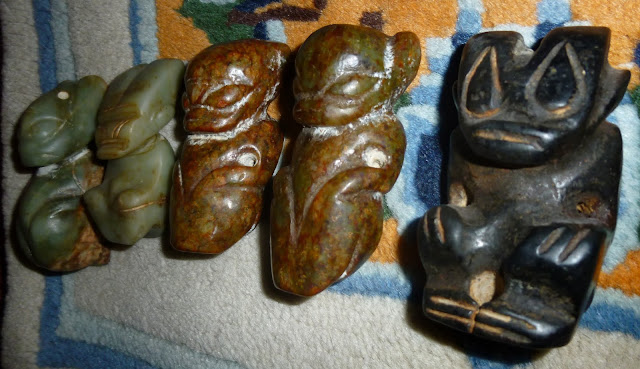












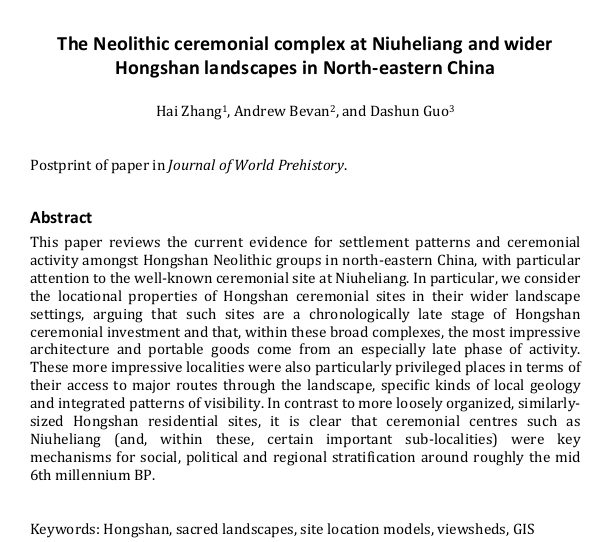































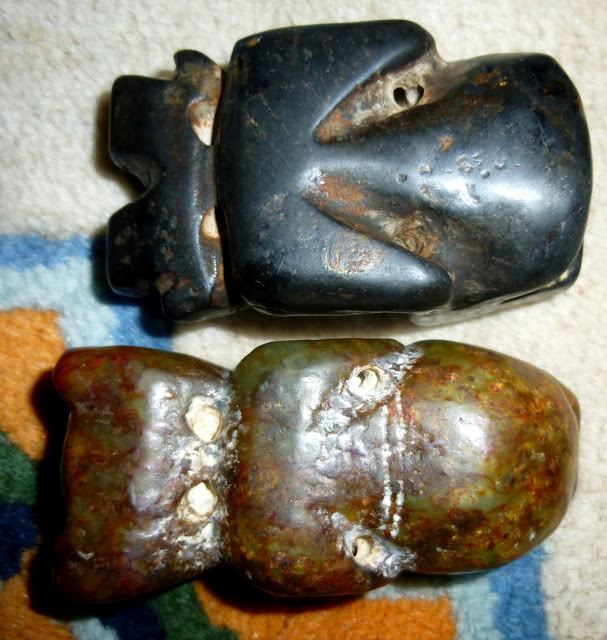


























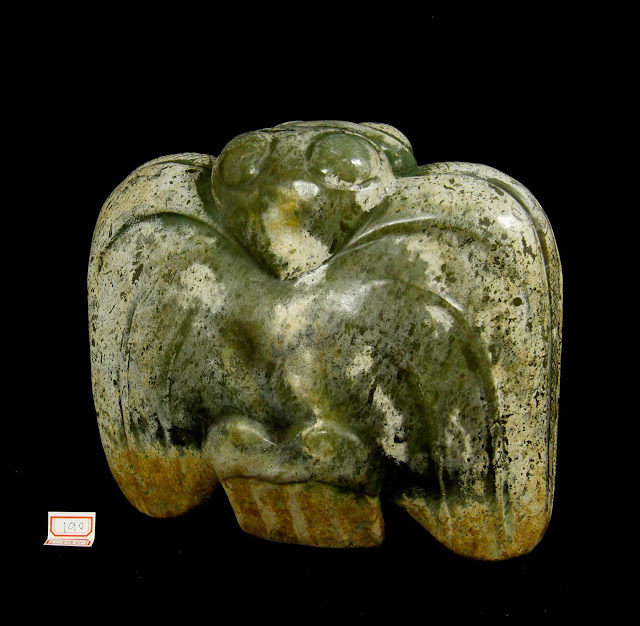


















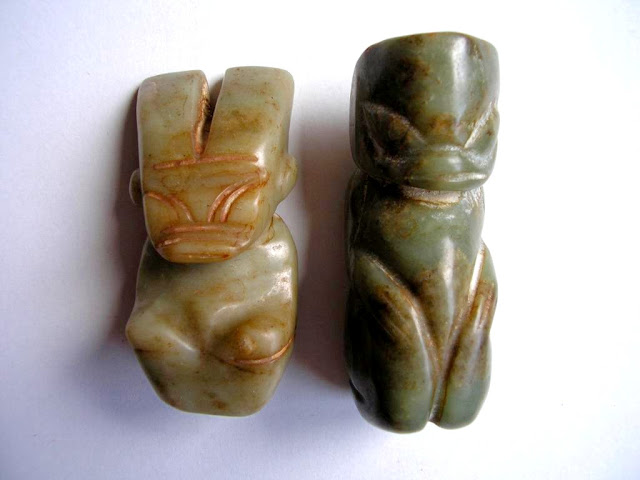
















Geen opmerkingen:
Een reactie posten